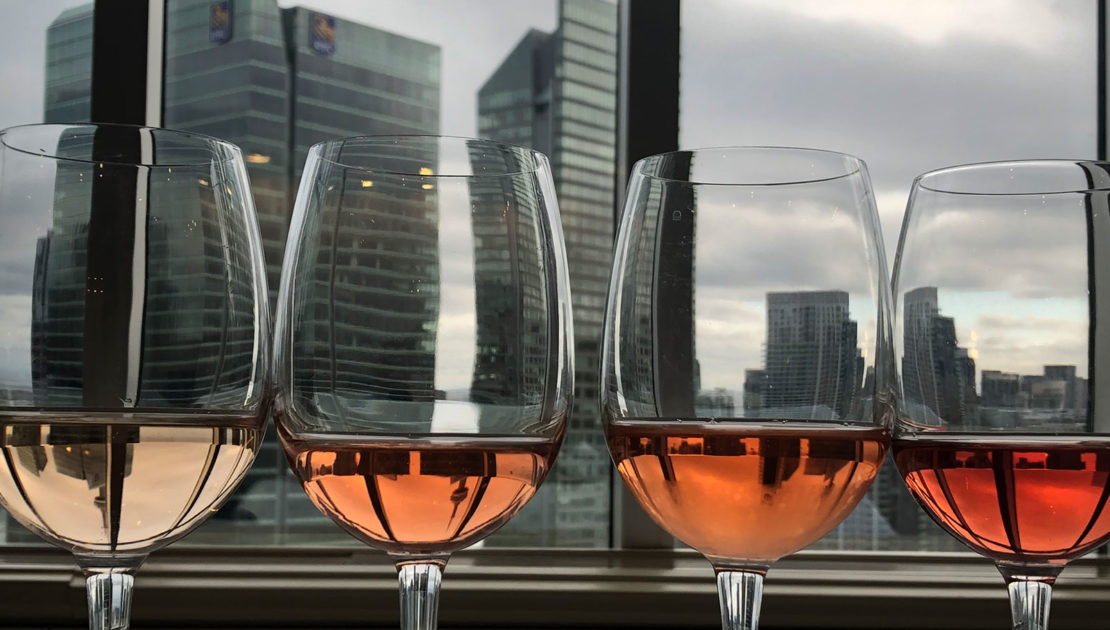The 4 Ways to Make Rosé

Not all rosés are created equally. Here’s the 4 ways to make them.
By Erin
Rosé season is here! But, if you’re anything like us, it’s never left.
Yep, pink wines are definitely having a very big moment that’s been going on for the last few years. I’m not sure who is on the rosé PR team, but I would certainly like to chat with those brilliant minds. Many wine historians believe rosé was the first style of wine ever made. In more recent history, the 80’s catapulted the fruity, slightly sweet White Zinfandel to soaring heights of popularity – crowning it the poster child for rosé everywhere. Well, what goes up, must come down, and crash rosé did. The festive frivolity and excess of the 80’s fizzled out, and with it the merriment of many cultural benchmarks of celebration: Fuzzy Navel and Long Island Iced Tea cocktails. Chardonnay (we’ll talk about that another time), and of course, rosé.
But something curious – and fabulous – happened in the last five or six years. Pink wine made a comeback. And it came back in a big, big way. Now fans are wearing T-shirts (including yours truly) advertising to “rosé all day.” Dudes began confidently sipping the blushing beauties because it was assured that “real men drink pink” so instead of Bud, wind down with a Brosé.
And wine lovers began to realize that not all rosés are sweet. Some are, sure, and there ain’t nothing wrong with that. But many are dry, crisp, refreshing – and very food friendly. But not all rosés are created equally. In fact, there’s actually four ways to get a pink wine and we break them down here.
Maceration
This simply means skin contact. Wines, of course, get their colour from the skin of the grape. (Any red grape can be used for rosé). When grapes are crushed, the clear juice runs out, and to get colour into a wine, the skins are left to sit and macerate with the juice. Think of it like steeping tea: the longer the bag sits in the water the deeper, darker and more tannic the tea will become. Rosé (and ultimately red wines as well) are the same. If you leave the skins with the juice for a few weeks, you get a nice, richly coloured, red wine. But if you leave the skins with the juice for a few hours, or maybe a day or two, you get a petty shade of pink.
Direct pressing
When the winemaker crushes out the clear juice from the grape, inevitably that minor skin contact will tint the juice oh-so-slightly for a delicately pale pink wine.
Saignée
This means “to bleed” in French. In winemaking it means to bleed off – or remove – some wine from the tank. Did you see my Instagram live last week where I talked about how to make rosé? This technique seemed to raise the most questions, so stick with me here. When a winemaker has a tank of macerating juice, he or she may want to make that red wine more concentrated and powerful. So, that winemaker might choose to bleed off some of the juice, and create a greater skin-to-juice ratio to the remaining liquid in the tank. But what to do with the juice that has just been removed? That goes into a separate tank. It’s now slightly tinted from a day or so of maceration, and it will be vinified separately into a rosé wine.
Blending
This is not really considered a superior way to make rosé table wine. Taking your Cabernet and your Sauvignon Blanc and mixing them together isn’t really all that posh. But, just because the wine world likes to keep people on their toes, blending finished wine is acceptable – even revered – for Champagne. (And also the regions that use Champagne’s technique for making their own bubbly). But that’s the only time and place for blending red and white together.
Thirsty to learn more? Join us Live on Instagram Wednesday and Friday nights at 8pm EST for virtual wine tastings!
